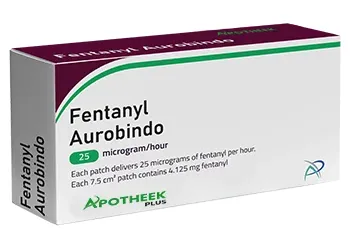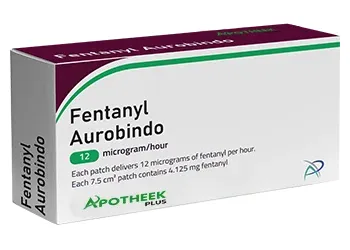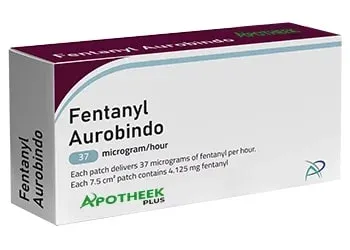
Understanding Fentanyl Patches: Dosages, Effects, and Medical Use Explained

Pain management has come a long way since it started, and the transdermal patch is among the most sophisticated equipment used nowadays. Among these, fentanyl patches are used frequently to treat chronic and severe pain. A method of providing controlled amounts of drug over a specified period, fentanyl patches offer a constant, continuous source of relief when oral medication is not an option.
We will describe what fentanyl patches are, how the various doses function, what they accomplish, and how they are generally applied in hospitals.
What is a Fentanyl Patch?
A fentanyl patch is a transdermal, adhesive patch that chronically releases fentanyl, a powerful opioid, into the system. It is typically the drug of choice for patients who have chronic pain, i.e., postoperative pain or cancer pain, where continuous management of the pain is needed.
The patch provides a smooth and extended drug release, a comfortable and efficient choice for pain patients requiring extended relief.
Various Dosages and Their Applications
Fentanyl patches come in different strengths. You should remember that these different doses are meant to cater to varying levels of pain intensity and individual medical needs.
-
Fentanyl patch 100
Fentanyl patch 100 is the strongest available for general purposes and is generally only reserved for the management of intractable pain. Because of its strength, it's vitally important that the dose of this be given under the direction of professionals, particularly in those who have built up a high tolerance to opioids.
-
Fentanyl patch 75
A mid-high dose strength, fentanyl patch 75, is also indicated for the relief of severe pain. Patients can be escalated to this strength after becoming tolerant of lower strengths.
-
Fentanyl patch 50 mcg side effects and fentanyl 50 mcg
The 50 mcg per hour strength is commonly used for patients moving from moderate to severe pain management needs. These patients can develop fentanyl patch effects, like drowsiness, nausea, or dry mouth, as the body adapts to the drug.
-
Fentanyl patch 25
Usually, a starting dose for most patients, this strength gives a moderate introduction to transdermal opioid therapy. It offers less intense relief than higher doses but still provides notable relief from chronic pain.
-
Fentanyl 12 mcg patch and fentanyl 12 micrograms
These are also called low-dose preparations and may be employed for chronic or minor pain or detoxification of higher potency. Even at the reduced dose, effects may be significant based on an individual's tolerance to pain and history of opioid exposure.
How Fentanyl Patches Work
After being applied to a dry, clean area of skin, typically the upper arm or upper back, the fentanyl drug begins dissolving fentanyl into layers of skin. The medication is absorbed into the body and is effective within a few hours.
Every patch should be used for a maximum of 72 hours. When taking the dosage, the time must be followed to the letter to ensure consistent pain relief and to avoid overlapping the doses, which can lead to additional side effects.
Potential Effects and Considerations
The fentanyl patch effect may differ from individual to individual based on the body chemistry, previous exposure to opioids, and the exact dosage administered.
Characteristic effects recorded are:
-
Somnolence
-
Nausea or constipation
-
Headaches
-
Mild dizziness or confusion
-
Skin irritation at the application site
Under unusual situations or with misuse, greater effects will occur, including respiratory depression. Therefore, no prescription advice is provided here. Still, it is highly recommended that one go visit a health care provider for consultation before starting or changing the use of any fentanyl patch.
It is also critical not to expose the patch to high heat, such as with heating pads or hot baths, because this can accelerate the drug's release and increase risks.
How to Use Fentanyl Patches Correctly
To ensure safety and effectiveness:
-
Apply only to clean, dry, non-hairy skin on the chest, upper arm, or back.
-
Press firmly for 30 seconds to ensure adhesion.
-
Do not cut or split the patch.
-
Replace every 72 hours (exactly 3 days).
-
Remove the old patch before applying a new one.
-
Rotate application sites — never reuse the same area within several days.
-
Dispose of used patches by folding them sticky sides together and returning to a pharmacy.
Factors That Affect Fentanyl Absorption
Fentanyl absorption can vary between individuals.
Important influencing factors include:
-
Body temperature: Fever or external heat accelerates absorption.
-
Skin condition: Damaged or thin skin allows faster absorption.
-
Drug interactions: CYP3A4 inhibitors (e.g., erythromycin, ketoconazole, ritonavir) increase blood fentanyl levels.
-
Body fat percentage: Alters storage and release kinetics.
Understanding these helps patients use patches more safely.
Clinical Guidelines (2024 European Update)
According to 2024 European Pain Federation guidelines:
-
Fentanyl patches should be used only for chronic pain in patients already tolerant to opioids.
-
They should not be prescribed for acute or postoperative pain.
-
Close observation during the first 24 hours of therapy is essential to detect respiratory depression or over-sedation.
-
Always taper gradually when discontinuing treatment to prevent withdrawal.
Alternating Between Doses
Fentanyl dose adjustment—either increasing or decreasing—is typically stepwise. Physicians may gradually switch patients from fentanyl patch 25 to fentanyl patch 50 mcg effects, or vice versa, based on the patient's experience, tolerance, and pain requirements.
Even low-dose preparations like fentanyl patch 12 mcg or fentanyl 12 micrograms may play a significant role in modifying therapy or in assisting those tapering off the drug.
Conclusion
Fentanyl patches provide a potent option for managing chronic pain. With various strengths like fentanyl patch 100, fentanyl patch 75, and fentanyl 50 mcg, patients are provided with the capacity to personalize their treatment according to their varying levels of pain and disease. If you are looking at using a fentanyl patch as part of your pain management program, consultation with a qualified medical professional is highly recommended to maximize safety and efficacy. For individuals looking for a discreet online provider from which they can acquire quality drugs on the most appropriate ones to utilize, En.ApotheekPlus offers an anonymous and convenient facility to fulfill their needs.
FAQ:
What are fentanyl patches used for?
They are used for chronic severe pain in patients already taking opioid medication, providing continuous relief for up to 72 hours.
How long does it take for Fentanyl Patches to kick in?
The patch typically takes 12–24 hours to become active in the body, as medications are slowly absorbed through the skin.
Am I able to bathe or swim with the patch?
Yes, but stay away from hot water or saunas, which will increase drug absorption.
If a patch falls off prematurely, what do I do?
Dispose of it properly and buy a new patch for a separate location. Never apply two patches simultaneously.
What are the side effects of Fentanly?
There may be drowsiness, constipation, nausea, and slight vertigo.
Get emergency medical help if you have slow breathing or confusion.
Are fentanyl patches addictive?
Yes. Fentanyl is possibly habit-forming and generates tolerance. Use only under strict medical supervision.
Are fentanyl patches the cure for breakthrough pain?
No. They provide steady pain control, not rapid relief. Separate short-acting medication is used for sudden pain episodes.
What do I do with used patches?
Fold the patch so that sticky sides meet, and take it to a pharmacy or safe disposal program.
Is it safe for the elderly to use fentanyl patches?
Yes, but only under close supervision, as they are more sensitive to opioids.
What shouldn't I do when wearing a patch?
Do not drink alcohol, use sedatives, or apply additional heat. Do not cut the patch.








